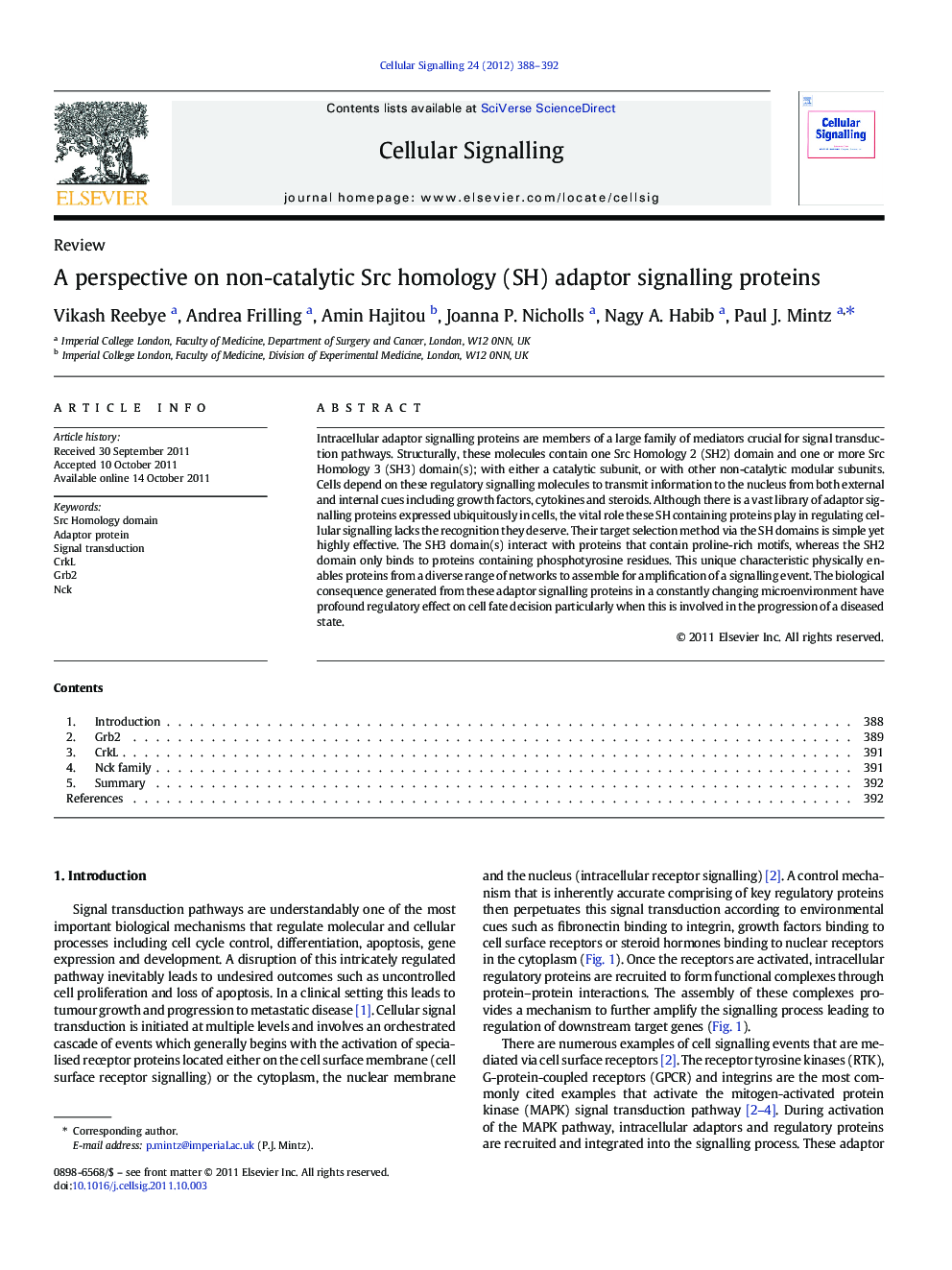| کد مقاله | کد نشریه | سال انتشار | مقاله انگلیسی | نسخه تمام متن |
|---|---|---|---|---|
| 1964691 | 1058571 | 2012 | 5 صفحه PDF | دانلود رایگان |

Intracellular adaptor signalling proteins are members of a large family of mediators crucial for signal transduction pathways. Structurally, these molecules contain one Src Homology 2 (SH2) domain and one or more Src Homology 3 (SH3) domain(s); with either a catalytic subunit, or with other non-catalytic modular subunits. Cells depend on these regulatory signalling molecules to transmit information to the nucleus from both external and internal cues including growth factors, cytokines and steroids. Although there is a vast library of adaptor signalling proteins expressed ubiquitously in cells, the vital role these SH containing proteins play in regulating cellular signalling lacks the recognition they deserve. Their target selection method via the SH domains is simple yet highly effective. The SH3 domain(s) interact with proteins that contain proline-rich motifs, whereas the SH2 domain only binds to proteins containing phosphotyrosine residues. This unique characteristic physically enables proteins from a diverse range of networks to assemble for amplification of a signalling event. The biological consequence generated from these adaptor signalling proteins in a constantly changing microenvironment have profound regulatory effect on cell fate decision particularly when this is involved in the progression of a diseased state.
► We highlight the biological roles that adaptor proteins have in regulating cellular signalling.
► In particular we focus on the roles of three specific adaptor proteins that are evolutionarily conserved.
► The presence of src homology domains in these protein dictate their vast and complex role in normal cell homeostasis.
► It is now emerging that they also play a crucial role enabling cells to adapt to a changing microenvironment during disease progression.
► Understanding how they function may highlight why certain types of cancer evade therapy.
Journal: Cellular Signalling - Volume 24, Issue 2, February 2012, Pages 388–392